Dear Zazie, Here is today’s Lovers’ Chronicle from Mac Tag dedicated to his muse. Follow us on twitter @cowboycoleridge. Rhett
The Lovers’ Chronicle
Dear Muse,
another recurrin’ theme
“Of many things”
yes, of streams of words
of light, of consciousness
“Where did this one come from”
the Who song
“I thought so”
Pete was “searching high and low”
and it struck me at the time, that
i would end up like the song,
not findin’ it till the day i died
but now they can call me
the seeker and finder
© copyright 2023 mac tag/cowboycoleridge all rights reserved
© copyright 2021 mac tag/cowboy coleridge all rights reserved
verse maker,
dreamer,
wanderin’ by,
a seeker, on whom
the pale moon gleams
we are it seems, in wonder
we build out of a story
we fashion
with a new song’s
measure
out of the past
with our sighin’,
with our mirth
our inspiration
for what is comin’
our dreamin’
seemin’ possible
© copyright 2019 mac tag/cowboy coleridge all rights reserved
ask why, the woman
with the broken smile
“Because I am damaged.”
darlin’, we all are
and that is not what i see
come we will seek
and we will find
what lies within
© copyright 2018 mac tag/cowboy coleridge all rights reserved
verse maker
dreamer
son of a son
of the High Plains
solitary soul
seeker of streams
of words, of light,
of consciousness,
and of course
the mountain kind
© copyright 2017 mac tag/cowboy Coleridge all rights reserved

Today is the birthday of Arthur William Edgar O’Shaughnessy (London 14 March 1844 – 30 January 1881 London); poet and herpetologist of Irish descent. He is most remembered for his ode beginning with the words “We are the music makers, /And we are the dreamers of dreams” which has been set to music several times.
The artists Dante Gabriel Rossetti and Ford Madox Brown were among O’Shaughnessy’s circle of friends, and in 1873, he married Eleanor Marston, the daughter of author John Westland Marston and the sister of the poet Philip Bourke Marston. Together, he and his wife wrote a book of children’s stories, Toy-land (1875). They had two children together, both of whom died in infancy.
Eleanor died in 1879, and O’Shaughnessy himself died in London two years later at the age of 36 from the effects of a “chill” after walking home from the theatre on a rainy night. He is buried in Kensal Green Cemetery.
Verse
Music and Moonlight (1874)
Ode
- We are the music makers,
And we are the dreamers of dreams,
Wandering by lone sea-breakers,
And sitting by desolate streams; —
World-losers and world-forsakers,
On whom the pale moon gleams:
Yet we are the movers and shakers
Of the world for ever, it seems.
- With wonderful deathless ditties
We build up the world’s great cities,
And out of a fabulous story
We fashion an empire’s glory:
One man with a dream, at pleasure,
Shall go forth and conquer a crown;
And three with a new song’s measure
Can trample an empire down.
- We, in the ages lying
In the buried past of the earth,
Built Nineveh with our sighing,
And Babel itself with our mirth;
And o’erthrew them with prophesying
To the old of the new world’s worth;
For each age is a dream that is dying,
Or one that is coming to birth.
- A breath of our inspiration
Is the life of each generation;
A wondrous thing of our dreaming
Unearthly, impossible seeming —
The soldier, the king, and the peasant
Are working together in one,
Till our dream shall become their present,
And their work in the world be done.
- They had no vision amazing
Of the goodly house they are raising;
They had no divine foreshowing
Of the land to which they are going:
But on one man’s soul it hath broken,
A light that doth not depart;
And his look, or a word he hath spoken,
Wrought flame in another man’s heart.
- And therefore to-day is thrilling
With a past day’s late fulfilling;
And the multitudes are enlisted
In the faith that their fathers resisted,
And, scorning the dream of to-morrow,
Are bringing to pass, as they may,
In the world, for its joy or its sorrow,
The dream that was scorned yesterday.
- But we, with our dreaming and singing,
Ceaseless and sorrowless we!
The glory about us clinging
Of the glorious futures we see,
Our souls with high music ringing:
O men! it must ever be
That we dwell, in our dreaming and singing,
A little apart from ye.
We are afar with the dawning
And the suns that are not yet high,
And out of the infinite morning
Intrepid you hear us cry —
How, spite of your human scorning,
Once more God’s future draws nigh,
And already goes forth the warning
That ye of the past must die.
- Great hail! we cry to the comers
From the dazzling unknown shore;
Bring us hither your sun and your summers;
And renew our world as of yore;
You shall teach us your song’s new numbers,
And things that we dreamed not before:
Yea, in spite of a dreamer who slumbers,
And a singer who sings no more.
Barcarolle
- The stars are dimly seen among the shadows of the bay,
And lights that win are seen in strife with lights that die away.
- O precious is the pause between the winds that come and go,
And sweet the silence of the shores between the ebb and flow.
- Spread sail! For it is Hope today that like a wind new-risen
Doth waft us on a golden wing towards a new horizon,
That is the sun before our sight, the beacon for us burning,
That is the star in all our night of watching and of yearning.
- Love is this thing that we pursue today, tonight, for ever,
We care not whither, know not who shall be at length the giver:
For Love, — our life and all our years are cast upon the waves;
Our heart is as the hand that steers; — but who is He that saves?
| Ferdinand Hodler | |
|---|---|

Self-portrait, 1916
|
|
Today is the birthday of Ferdinand Hodler (Bern; March 14, 1853 – May 19, 1918 Geneva); in my opinion, one of the best-known Swiss painters of the nineteenth century. His early works were portraits, landscapes, and genre paintings in a realistic style. Later, he adopted a personal form of symbolism he called “parallelism”.
In 1884, Hodler met Augustine Dupin (1852–1909), who became his companion and model for the next several years.
From 1889 until their divorce in 1891, Hodler was married to Bertha Stucki, who is depicted in his painting, Poetry (1897, Museum für Gestaltung, Zürich). In 1898, Hodler married Berthe Jacques.
In 1908, Hodler met Valentine Godé-Darel, who became his mistress. She was diagnosed with cancer in 1913, and the many hours Hodler spent by her bedside resulted in a remarkable series of paintings documenting her decline from the disease. Her death in January 1915 affected Hodler greatly. He occupied himself with work on a series of about 20 introspective self-portraits that date from 1916.
By 1917 his health was deteriorating. In November of that year he became ill with pulmonary edema, and told his son he was considering suicide. Although mostly bedridden, he painted a number of views of the city from his balcony in the months before his death.
Gallery
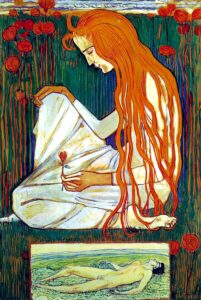
The dream


-

The Shoemaker, 1878
-

Portrait of Louise-Delphine Duchosal, 1885
-
The Chosen One, 1893
-

The Halberdier, 1895, Dallas Museum of Art
-

Spring, 1901
-

Portrait of Baronin Maria von Bach, 1904
-

Lake Geneva as seen from Chexbres, 1905
-

Joyous Woman, 1911
-

Self-portrait, 1916
-

Le Grand Muveran, 1912
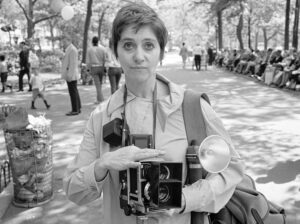 And today is the birthday of Diane Arbus (née Nemerov; New York City;March 14, 1923 – July 26, 1971 New YorkCity); photographer. She photographed a wide range of subjects including strippers, carnival performers, nudists, people with dwarfism, children, mothers, couples, elderly people, and middle-class families. She photographed her subjects in familiar settings: their homes, on the street, in the workplace, in the park. “She is noted for expanding notions of acceptable subject matter and violates canons of the appropriate distance between photographer and subject. By befriending, not objectifying her subjects, she was able to capture in her work a rare psychological intensity.” In his 2003 New York Times Magazine article, “Arbus Reconsidered”, Arthur Lubow states, “She was fascinated by people who were visibly creating their own identities—cross-dressers, nudists, sideshow performers, tattooed men, the nouveaux riches, the movie-star fans—and by those who were trapped in a uniform that no longer provided any security or comfort.” Michael Kimmelman writes in his review of the exhibition Diane Arbus Revelations, that her work “transformed the art of photography (Arbus is everywhere, for better and worse, in the work of artists today who make photographs)”. Arbus’s imagery helped to normalize marginalized groups and highlight the importance of proper representation of all people.
And today is the birthday of Diane Arbus (née Nemerov; New York City;March 14, 1923 – July 26, 1971 New YorkCity); photographer. She photographed a wide range of subjects including strippers, carnival performers, nudists, people with dwarfism, children, mothers, couples, elderly people, and middle-class families. She photographed her subjects in familiar settings: their homes, on the street, in the workplace, in the park. “She is noted for expanding notions of acceptable subject matter and violates canons of the appropriate distance between photographer and subject. By befriending, not objectifying her subjects, she was able to capture in her work a rare psychological intensity.” In his 2003 New York Times Magazine article, “Arbus Reconsidered”, Arthur Lubow states, “She was fascinated by people who were visibly creating their own identities—cross-dressers, nudists, sideshow performers, tattooed men, the nouveaux riches, the movie-star fans—and by those who were trapped in a uniform that no longer provided any security or comfort.” Michael Kimmelman writes in his review of the exhibition Diane Arbus Revelations, that her work “transformed the art of photography (Arbus is everywhere, for better and worse, in the work of artists today who make photographs)”. Arbus’s imagery helped to normalize marginalized groups and highlight the importance of proper representation of all people.
her lifetime she achieved some recognition and renown with the publication, beginning in 1960, of photographs in such magazines as Esquire, Harper’s Bazaar, London’s Sunday Times Magazine, and Artforum. In 1963 the Guggenheim Foundation awarded Arbus a fellowship for her proposal entitled, “American Rites, Manners and Customs”. She was awarded a renewal of her fellowship in 1966. John Szarkowski, the director of photography at the Museum of Modern Art (MoMA) in New York City from 1962 to 1991, championed her work and included it in his 1967 exhibit New Documents along with the work of Lee Friedlander and Garry Winogrand. Her photographs were also included in a number of other major group shows.
In 1972, a year after her suicide, Arbus became the first photographer to be included in the Venice Biennale where her photographs were “the overwhelming sensation of the American Pavilion” and “extremely powerful and very strange”.
The first major retrospective of Arbus’ work was held in 1972 at MoMA, organized by Szarkowski. The retrospective garnered the highest attendance of any exhibition in MoMA’s history to date. Millions viewed traveling exhibitions of her work from 1972 to 1979. The book accompanying the exhibition, Diane Arbus: An Aperture Monograph, edited by Doon Arbus and Marvin Israel and first published in 1972 has never been out of print.
Gallery
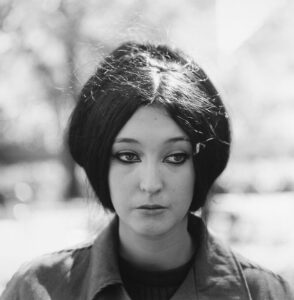
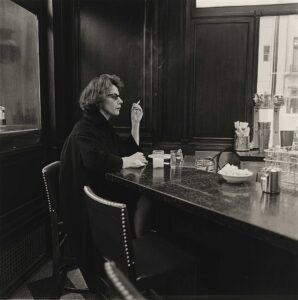
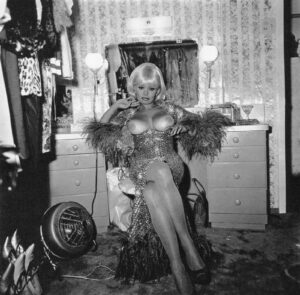
Carol doda
Mac Tag


No Comments on "The Lovers’ Chronicle 14 March – seeker – verse by Arthur O’Shaughnessy – art by Ferdinand Hodler – photography by Diane Arbus"